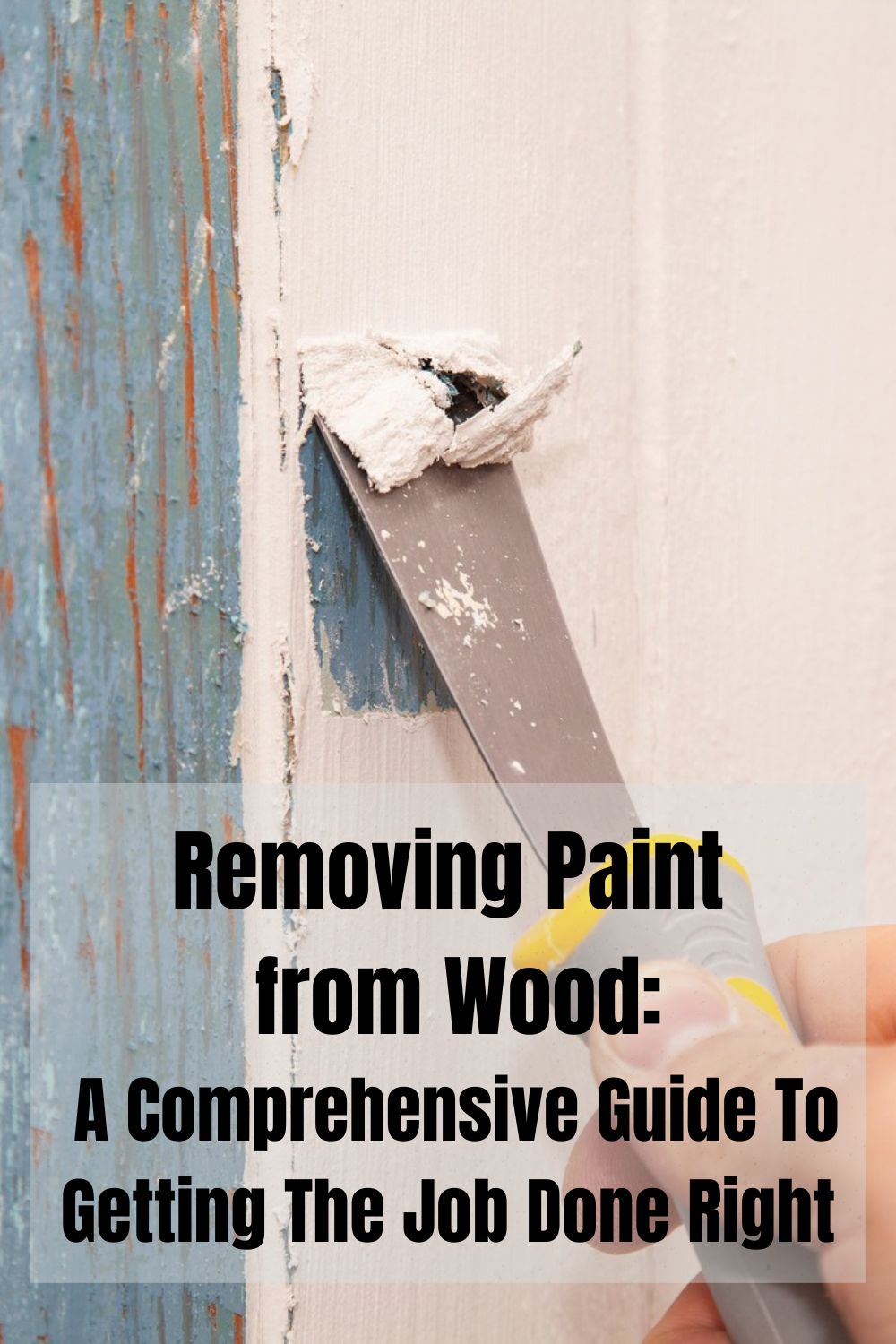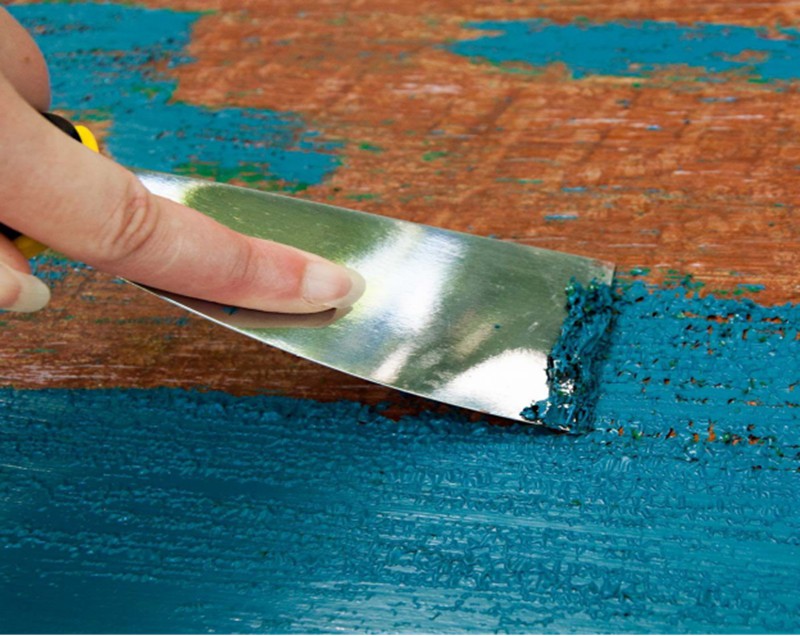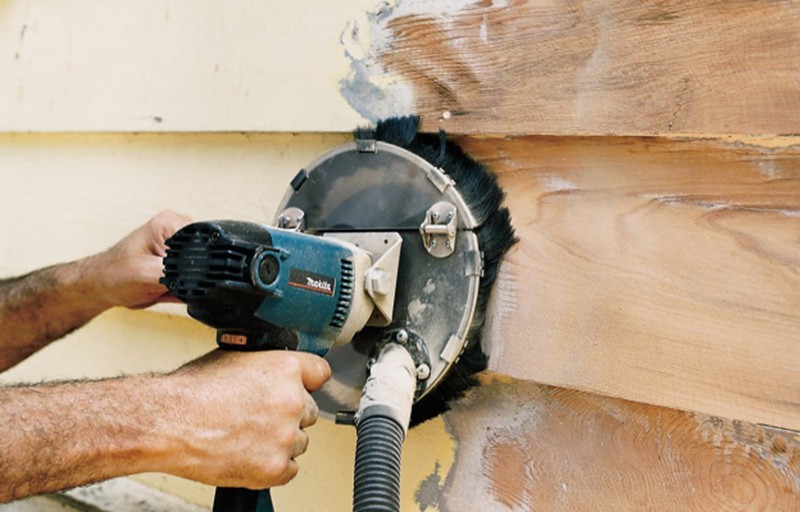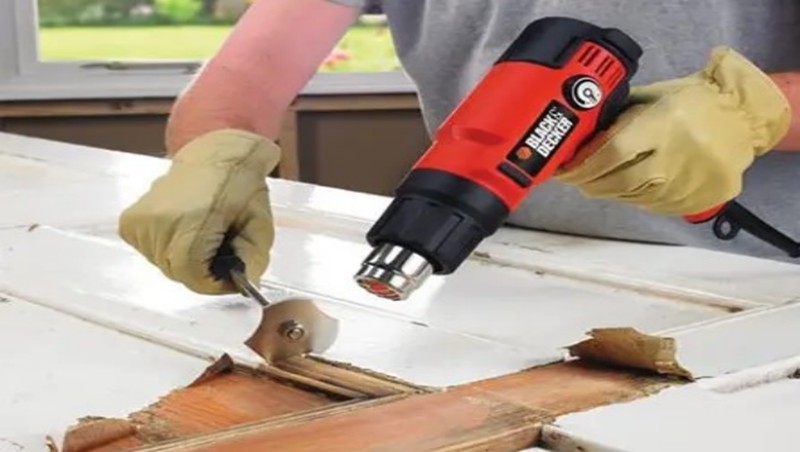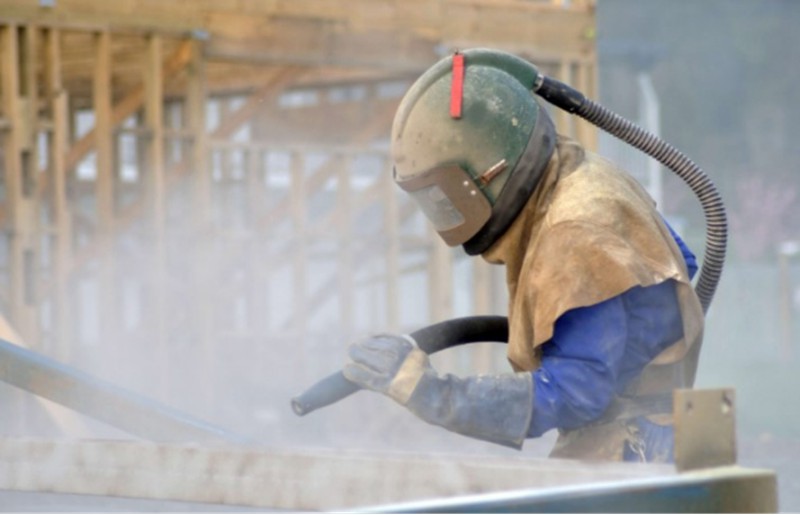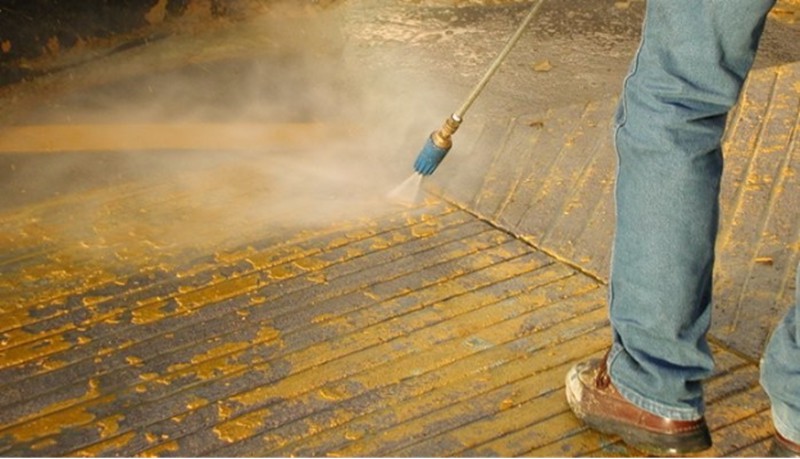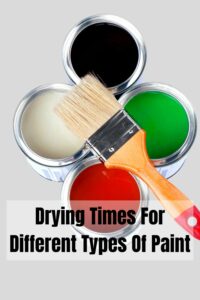Painted wooden surfaces can add color and personality to your home, but when the time comes to change the look, removing old paint can be a daunting task. Whether you want to restore the natural beauty of your wooden furniture or prepare a surface for a new coat of paint, it’s important to know the right techniques for safe and effective paint removal. There are several ways to remove paint from wood and in this article, we will explore some of the most popular methods, from traditional scraping and sanding to modern chemical strippers and heat guns.
Before starting any paint removal project, it’s important to consider safety precautions. Paints and coatings applied before 1978 may contain lead, which can be harmful if ingested or inhaled. Therefore, it’s important to wear protective gear, such as a mask and gloves, and to work in a well-ventilated area.
Additionally, different types of wood and paint require different methods of removal. Soft woods like pine or fir are more prone to damage than hardwoods like oak or maple. Water-based paints are easier to remove than oil-based ones, but can still require a bit of elbow grease.
With the right tools and techniques, however, paint removal can be a manageable and rewarding DIY project. By following the step-by-step guide in this article, you can remove paint from wood safely and effectively, and give new life to your wooden surfaces.
Table of Contents
Can Paint Be Removed From Wood?
To this question, the answer is Yes! Paints can be removed from wood. There are several methods for removing paint from wood, including sanding, using a heat gun, and chemical stripping. The method you choose will depend on the type of paint, the age and condition of the wood, and the size and complexity of the surface you’re working on. It’s important to follow the appropriate safety precautions and use the correct tools and materials for the method you choose to ensure a successful and safe removal process.
How To Remove Paint From Wood – 5 Effective Methods
Whether you want to restore a vintage piece of furniture or you simply want to remove an old coat of paint from your home’s wooden surfaces, it’s important to know the proper techniques to get the job done right. Here are five effective methods to try when removing paint from wood:
Sanding
Sanding is a popular method for removing paint from wood. This technique involves using sandpaper or a sanding machine (also known as a sander) to scrape away the paint until you reach the bare wood. Sanding is a great option if you have a large surface area to cover or if you want to remove several layers of paint. When using sanding to remove paint from wood, it is essential to work in a well-ventilated area and wear protective gear. The dust produced by sanding can be harmful to your health if inhaled, so it’s crucial for you to use a mask to filter out the dust particles.
Here are the steps to take when you are removing paint from wood by sanding:
- Gather the necessary materials. You will need sandpaper or a sanding machine, a mask to protect your lungs from dust, protective eyewear, gloves, and a dustpan and broom or vacuum.
- Select the appropriate grit of sandpaper for your project, starting with a coarse gritand gradually working your way up to a finer grit. A coarse grit of around 60-80 grit is suitable for removing paint, while a finer grit of 120-150 can be used to smooth the wood surface after the paint is removed.
- Sand the surface of the wood with a back-and-forth motion, following the grain of the wood. Be sure to use light to moderate pressure, as too much pressure can damage the wood. If you are using a sanding machine, use a light touch and allow the machine to do the work for you.
- After sanding, use a vacuum or dustpan and broom to clean up any dust and debris. Be sure to wear your mask during this step to avoid inhaling any dust particles.
- Depending on the thickness and type of paint, you may need to repeat the sanding process several times to completely remove the paint.
It’s important to note that sanding can be time-consuming and labor-intensive, especially if you’re removing multiple layers of paint. Additionally, if you’re working on an intricate or detailed surface, sanding may not be the best option, as it can be challenging to sand in hard-to-reach areas. Overall, sanding is a reliable method for removing paint from wood, but it’s crucial to use the appropriate safety precautions and take your time to ensure a successful removal process.
If you want to know more about this process, check out the following video on Youtube:
Heat Gun
A heat gun is an excellent option for removing paint from wood due to its ability to quickly and efficiently loosen and soften the paint, making it easy to scrape away. Unlike chemical paint strippers, which can be harsh and pose health and safety risks, heat guns rely on heat to do the job, making them a safer and more environmentally friendly alternative. Additionally, a heat gun allows for greater precision and control, as you can focus on specific areas and adjust the temperature as needed to avoid damaging the wood. Overall, a heat gun is a versatile and effective tool for removing paint from wood for minor touch-ups or larger refinishing projects.
To remove paint from wood using a heat gun, follow these steps:
- Wear gloves, goggles, and a respiratorto protect yourself from fumes and dust.
- Lay down a drop cloth or some newspapers to catch any paint chips or debris.
- Choose the appropriate temperature setting on your heat gun. Start on a low setting and gradually increase it until you find the optimal temperature for your specific paint and wood combination.
- Hold the heat gun approximately 2-3 inches away from the painted surface and move it slowly back and forth, focusing on a small section at a time. The paint will start to bubble and loosen from the wood.
- Once the paint has bubbled up, use a paint scraper or putty knife to gently scrape it away. Be careful not to apply too much pressure, as this could damage the wood surface.
- Continue heating and scraping the paint in small sections until all the paint is removed. You may need to repeat the process multiple times, especially if the paint is thick or there are multiple layers.
- After removing the paint, clean up any remaining debris and dust with a damp cloth or vacuum. Allow the wood surface to cool completely before applying any new finishes or coatings.
Be cautious when using a heat gun, as it can get very hot and cause burns or start a fire if not used properly. Always follow the manufacturer’s instructions and safety precautions.
You can check out the following video on YouTube if you are interested in seeing a physical demonstration of this method:
Abrasive Blasting
Abrasive blasting, also known as sandblasting, is a process of forcibly propelling a stream of abrasive material against a surface under high pressure to remove rust, paint, or other coatings and prepare the surface for further treatment. The abrasive material used can vary, depending on the nature of the surface being treated and the desired result, but it typically includes sand, aluminum oxide, or steel shot. The abrasive material is propelled through a nozzle by compressed air, water, or a centrifugal wheel, and the resulting impact of the abrasive particles against the surface removes any unwanted coatings, rust, or debris.
While abrasive blasting is typically used for removing coatings from hard surfaces such as metal, it can also be effective for removing paint from wood. Abrasive blasting can be especially useful when removing old or thick layers of paint from wooden surfaces, as the abrasive material can penetrate the grain and contours of the wood and remove all traces of the paint. Here is how you can go about this method:
- Wear protective gear, including gloves, eye protection, and a respirator. Cover the surrounding area with plastic sheeting to prevent the abrasive material from spreading. If possible, remove any hardware or other items from the wood surface.
- Select an abrasive material that is appropriate for the wood surface and the type of paint being removed. Common abrasive materials used for wood include aluminum oxide, walnut shells, corn cob, or baking soda.
- Set up the abrasive blasting equipment according to the manufacturer’s instructions, including the air pressure, nozzle size, and flow rate. Test the equipment on a small, inconspicuous area of the wood surface to determine the optimal settings.
- Hold the nozzle of the blasting gun 6-8 inches away from the wood surface and aim the stream of abrasive material at the painted area. Move the gun back and forth to cover the entire painted surface. Be careful not to hold the gun too close or too long on any area, as this can damage the wood surface.
- After blasting the paint, inspect the wood surface to ensure that all traces of paint have been removed. If any paint remains, repeat the process in the affected areas.
- Once all the paint has been removed, clean the wood surface with a vacuum, air compressor, or brush to remove any remaining abrasive material or debris.
- Sand the wood surface with fine-grit sandpaper to remove any remaining traces of paint or abrasive material and to smooth out the surface.
- After sanding, apply a new finish or coating to the wood surface to protect it from future damage.
However, abrasive blasting can also be potentially damaging to wood surfaces if not done properly, so it should be performed by a professional who is experienced with the process and understands the nuances of wood surfaces.
Abrasive blasting is a very technical method of removing paint from wood. If you want to know more about this method, you can watch the following video on YouTube:
Pressure Washing
Pressure washing is a high-pressure cleaning method that uses a powerful stream of water to remove dirt, grime, and other materials from surfaces. It is often used for cleaning outdoor surfaces such as driveways, decks, and siding, but it can also be used to remove paint from wood.
To remove paint from wood using a pressure washer, follow these steps:
- First, set up the pressure washer according to the manufacturer’s instructions. This typically involves connecting the hoses, filling the tank with water, and turning on the machine.
- Choose a nozzle that produces a concentrated stream of water, such as a 0-degree or 15-degree nozzle. This will provide the necessary pressure to remove the paint.
- Begin pressure washing the area with paint. Hold the nozzle a few inches away from the surface and move it back and forth in a sweeping motion.
- Depending on the thickness of the paint and the size of the area you are working on, you may need to make multiple passes with the pressure washer to fully remove the paint.
- Once you have removed the paint with the pressure washer, finish the job by sanding the surface to remove any remaining paint and smooth out any rough areas.
It is important to use caution when using a pressure washer to remove paint from wood, as too much pressure or holding the nozzle too close to the surface can damage the wood. It is also important to wear appropriate safety gear, such as eye protection when using a pressure washer.
If you want to see how this process is carried out, you can check out the following video on YouTube:
Conclusion
In conclusion, removing paint from wood can be a challenging task, but with the right tools, techniques, and safety measures, it can be done effectively. From sanding and scraping to using chemical strippers and heat guns, there are several options available depending on the type of paint and the condition of the wood.

